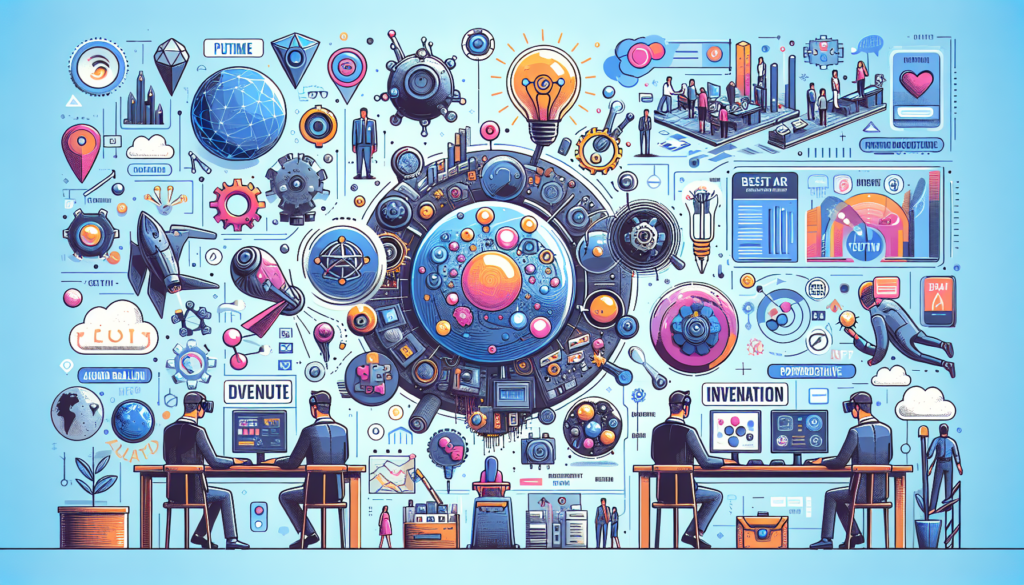Augmented Reality (AR), that emerging technology overlaying virtual information onto the real world, has become an invaluable tool for businesses across various sectors. Its ability to enhance user interaction with products and services not only empowers consumer experiences but also optimizes internal operations. Scouting for the best AR platforms that favor business environments requires pinpointing those that integrate the most advanced innovations with intuitive interfaces and robust practical applications.
Vuforia by PTC
Innovation and Applicability: Vuforia establishes itself as one of the leaders in the AR segment. Its powerful visual recognition engine, capable of identifying and tracking multiple objects simultaneously, allows developers to create interactive and immersive applications. From enabling virtual assembly instructions to remote assistance, Vuforia excels in knowledge transfer and workforce empowerment.
Comparison and Evolution: Compared to its predecessors, Vuforia has expanded accessibility through compatibility with a wide range of devices, including smartphones, tablets, and AR viewers. It stands out for its ability to support business environments with AR needs at scale, exhibiting significant evolution in 3D tracking and markerless augmented reality.
ARKit by Apple
Innovation and Applicability: ARKit is Apple’s significant venture into AR, specifically designed for the iOS ecosystem. With its iterations, it has enhanced surface and depth detection capabilities, thanks to LiDAR technology in compatible devices. Its seamless integration with Swift and the graphical power of Apple devices facilitates the development of genuinely immersive AR experiences.
Comparison and Evolution: Compared to the early forays into AR technology, ARKit has moved forward with features such as face tracking and support for shared experiences, promoting real-time collaboration. Moreover, advancements like eye tracking and body motion tracking outline an evolution toward more humanized and adaptive applications.
ARCore by Google
Innovation and Applicability: ARCore is Google’s platform for enabling AR experiences on Android devices. Its development reflects a commitment to accessibility and adaptability, promoting features such as environmental recognition and spatial mapping. ARCore, via powerful APIs, facilitates the creation of applications that understand and respond to the contextual information of the user’s environment.
Comparison and Evolution: Distinguishable from older platforms by its scalability and agility, ARCore has moved towards including technologies like ambient light estimation and point cloud visualization, significantly broadening the possibilities for interaction with the surrounding space.
Microsoft Mixed Reality Toolkit
Innovation and Applicability: Microsoft’s proposition focuses on mixed reality, merging the virtual and real worlds in a more integrated manner. The strength of the Mixed Reality Toolkit lies in its compatibility with a wide range of devices, such as HoloLens, and its integration with Azure for connected and cloud-based experiences.
Comparison and Evolution: The ability to interact with holograms and virtual objects in a shared environment sets it apart from early RA solutions that focused on individual and isolated experiences. The continuous investment in the development of collaborative environments and industrial applications portends the impact of mixed reality in the future workspace.
Case Study
Practical Example: In the manufacturing industry, a company might use the capabilities of ARKit to facilitate the repair of machinery. Through AR tablets, technicians can visualize overlaid diagrams and interactive guides that reduce downtime and enhance efficiency and safety at work.
These AR platforms represent just one facet of the ever-expanding technological landscape, with new solutions and improvements emerging regularly. In the continuous stream of technological innovations, AR platforms are advancing towards an era where interoperability and artificial intelligence will further transform business and user experiences.
This detailed analysis leads to a future perspective where AR becomes deeply rooted in business processes, highlighting the importance of selecting platforms that not only stand out today but are also ready to adapt to the fast-paced rate of technological change. It is here that the practical applications of AR pave the way for unprecedented innovations, redrawing the business horizon with each advancement in augmented and mixed reality.

